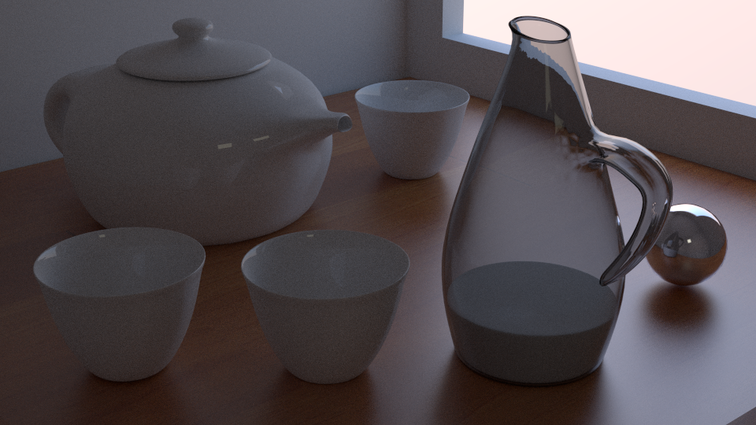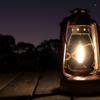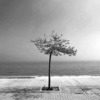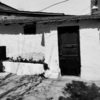Some more fun considering Photography from the ground up. Looking at the
fine details in a RAW file, noise is always present. The usual process is
to try and reduce any nasty Chroma noise as much as possible, while at the
same time retaining as much 'grain' (i.e. detail) as possible.
Here I am trying the new Cycles renderer in Blender, which is very noisy.
The noise can be reduced at the expense of more render passes, so greater
render times (a brute force approach, really). I started with 50 passes,
then 500, then 1,000 and then I started tweaking things. Finally, I upped
the quality and rendered this image (which took 20 minutes to render, that
being 20 minutes of parallelized CISC computing on my GPU using CUDA and
very fast VRAM memory). I suspect the quality may get acceptable somewhere
at around 10,000 passes. To be fair, this is an indoor scene - which is
where Cycles is supposed to be weak. So, I still don't think CG will be
replacing Photography any time soon.
The older Blender Internal (BI) renderer does a number of things very well,
for instance I think the wood here would look a lot better with some Bump
Mapping - but Cycles does not really support this well yet. On the other
hand, Cycles handles Caustics and GI (Global Illumination) pretty well. BI,
on the either hand, can not really do either of these. But materials/textures
in Cycles involves using Nodes, which work well but require more fundamental
understanding of the issues (basically a chained mathematical approach to
what would be layers in GIMP/PS).
I created everything in this scene from scratch (apart from the fine wood
texture) by following this highly detailed tutorial:
cg.tutsplus.com/tutorials/blender/create-and-render-a-still-life-scene-in-blender-using-cycles/
Having some experience with Blender, I did not follow it too exactly, so
I was expecting the poor quality of my modelling to show up in the render.
However, the exercise seems to have been designed very well, as the Cycles
materials and textures have completely rescued what should have been a
pretty poor-quality effort on my part.
Cycles has the promise of being a 'one-click' solution to the general
lighting problems inherent in CG scenes, whereas BI involves lots and lots
of very laborious tweaking to get good results. In the same way as RGB and
CMYK are different viewpoints on the same subject, each valid for slightly
different things, I think Cycles and BI may co-exist for a while yet. It
seems to me that BI is more of a wave-based approach to light, while Cycles
is more of a particle-based approach, but in either case I think a very good
understanding and eye for the qualities of light is still needed (the promise
of a 'one-click' solution still seems far away. In the same way that both GI
as well as Caustics have only come to be understood quite recently, and mainly
show up with man-made materials under controlled lighting conditions, it is
only possible to represent these accurately with a good understanding of how
they are caused and their physics. Of course, neither are particularly necessary,
so BI is still a good solution for almost all lighting conditions.)
Luckily, the Cycles people, after starting with a completely new approach
to lighting (it seems that they decided that everything should be an Area
lamp) realized that there was a baby in the bath-water, and reincorporated
all of the tradititional lamps into Cycles. So a hybrid approach is much
more feasible now. You can use Cycles for what it is really good at (being
real-time lighting, albeit very noisy) and then switch over to BI (once the
lighting is set up). Or even composite both of them (with the expense of
duplicating entire scenes) for a fully-hybrid approach (the upcoming 'Tears
of Steel' open movie does this somewhat, I think). However, all of this means
an increase in complexity, rather than a reduction. Kind of like processing
a RAW file as opposed to a JPEG (and now that Blender can handle HDR files,
I may have to look into processing these at some point, although the last time
I tried processing a file in 32-bit mode I ran out of disk space [paged-out
memory swap files] in about 5 minutes).
As always, comments and critique are very welcome, and I respond in kind.



















